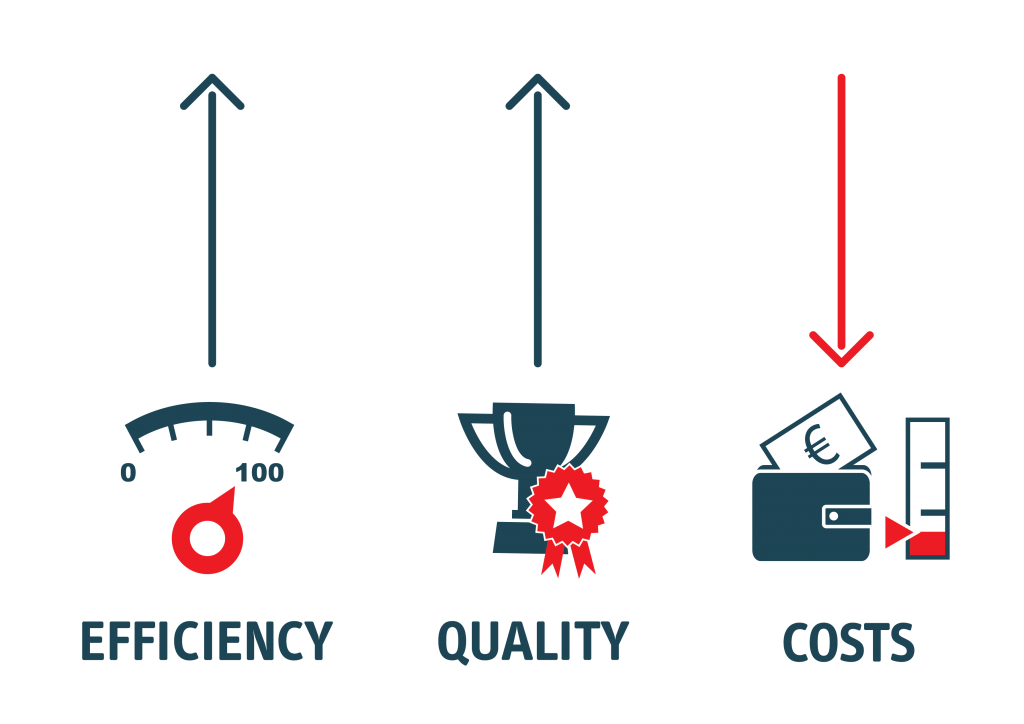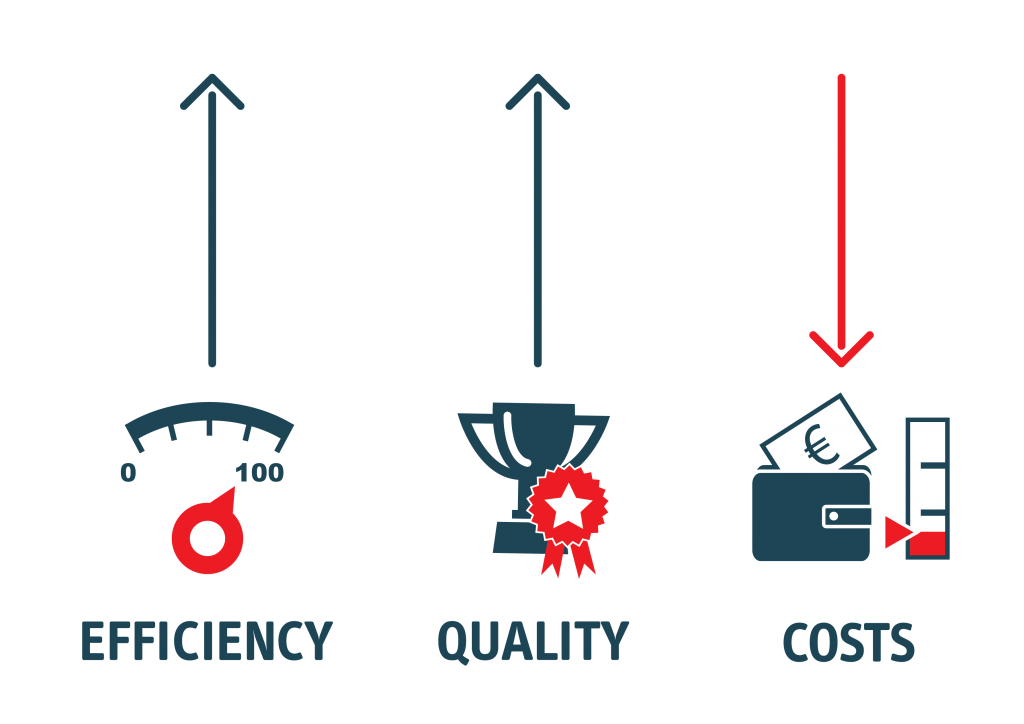Five Ways Appraisers Can Be More Efficient

 We all do things that make us less efficient than we could be. Most of us try to be as useful as possible, so we don’t waste time or energy. There are three categories of things we do that hinder our efficiency and effectiveness. First, there are things we know we could (and should) change. These are the things we do that make us comfortable but may inhibit our ability to get things done. Secondly, we have things we don’t know we’re doing, or not doing, that have become part of our processes. They may have begun as something that saved a little energy, but over time, they’ve crowded out other important parts of our operations. Third, methods we’ve purposefully put into place to make us more effective without measuring their effects.
We all do things that make us less efficient than we could be. Most of us try to be as useful as possible, so we don’t waste time or energy. There are three categories of things we do that hinder our efficiency and effectiveness. First, there are things we know we could (and should) change. These are the things we do that make us comfortable but may inhibit our ability to get things done. Secondly, we have things we don’t know we’re doing, or not doing, that have become part of our processes. They may have begun as something that saved a little energy, but over time, they’ve crowded out other important parts of our operations. Third, methods we’ve purposefully put into place to make us more effective without measuring their effects.
No one is perfectly efficient or effective, so I’m not saying that I’m perfect and that’s why you should listen to me. You should read on because these five tips can get you started on the path to getting things done.
How Automobile Manufacturing Became More Efficient
One-hundred-five years ago, Henry Ford introduced the automated assembly line to the automotive world, and it changed how consumer products were assembled and sold. Ford began thinking about the assembly line differently when he realized some of the same principles used in Midwestern farms and slaughterhouses were adaptable in other operations.
He also realized that to achieve his dream of bringing automobiles to the masses; he had to manufacture them cheaply and efficiently. Ford’s concept of the car led to innovations such as the conveyor belt to move the chassis of cars from one station to another. It also led to broader changes, such as interchangeable parts that fit each car assembled on the factory floor. Before Ford, each car was made by hand and bore the hallmarks of handcrafted processes. Ford could have continued to make his cars one-by-one; however, he realized the ability to make his dream a reality by trying things that no one had done before.
The automated assembly line led to further changes in the manufacture of automobiles. Even leading to systems like the Toyota Just-In-Time model. The changes Ford pioneered have been applied to other industries and various products throughout the economy.
When you attempt to find opportunities to streamline your business, you should prepare to be uncomfortable. And realize there may be some short-term pain before you see the results you want.
- One of the worst enemies of efficiency is email. Rarely has something created to make users more effective become such a time-suck. Luckily, there are tools out there you can use to grow, and most of the tools are low-cost or free. The first tool you can adopt is Microsoft Outlook. This email client is unavoidable in large offices across the country, and Microsoft takes some of the ideas of smaller, more agile, email clients and incorporates them into their program. One feature of Outlook I can’t live without is folders. You can set rules for your email that route your messages to a specific folder automatically. You can keep your emails organized. Recently, Microsoft has incorporated the Focused Inbox to display essential messages in their particular section of the program. Another feature of Outlook is the ability to quickly and easily add multiple mailboxes. In addition to email clients, another tip for emails is to create a separate email for orders. You can accomplish a lot with a specific email for orders, such as communicating with clients, asking questions, or following up on completed assignments. If you have a website and URL, your web developer or hosting company can help you create additional email addresses. Then you can have them set up on your email client.
Bookkeeping
- If you spend a lot of your time typing and retyping your invoices from your form vendors, you can find software that can quickly and correctly create invoices. Although costs are associated with bookkeeping software, you can automate your invoicing and record-keeping process. One software client you could use is Intuit Quickbooks. There are several different versions of Quickbooks that handle different sized companies. You can find one that meets your needs and keep your costs down.
Data Import Software
- If you’re still typing data from your MLS and public records into your subject and comparables, there is a better way. With data import software, like DataMaster, you can save time and energy and worry less about typos and errors. As an appraiser, your valuation decisions are only as good as the data you use. Your data should be coming directly from the MLS and formatted correctly for your reports. Many sources of data use static, point-in-time datasets, rather than “live” data that is gathered when you need it. Using static data is like using parts for a discontinued car in a new vehicle. When you use data import software, small changes in data can have a significant effect on your reports. Don’t take chances with your data import software. Use the patented processes DataMaster has honed over the past 20 years to get a leg up on your reports.
Plan for Tomorrow Today
- Have you heard that your ability to make good decisions gets weaker throughout the day? When you first wake up, you’re the most capable of making good choices like eating a healthy breakfast or exercising. As the day goes on, your willpower decreases and the number of decisions you make depletes your store. That’s why you never eat anything good after 10:00 pm and you’re less likely to work out when you’re tired. One way to fight the willpower lull is to make simple decisions the day before. That way you have fewer decisions the next day. Some things you can do the day before include deciding what you’ll wear the next day or planning your schedule, including driving routes, assignments, etc. You can also exercise There are several good Get-Things-Done (GTD) services out there, and many of them are free to use. If you use Microsoft 365®, you could use Microsoft Planner. If you’re looking for something online, look into Trello. Both of these GTD services utilize the card-and-list system to help you get more done. If you’re more comfortable with traditional to-do lists, Todoist and Wunderlist are two popular options that offer free services.

How you’ll feel after becoming more efficient
Communication
- The final tip to make yourself more efficient is to audit your communication methods. Before the proliferation of mobile phone, everyone expected to receive phone calls throughout the day. We even ran to the answering machine at the end of the day to make sure we didn’t miss anything. But it’s 2018, and things have changed. We carry at least one communication device with us at all times, and we’re never disconnected from our contacts. Most of us don’t remember our friends’ and families’ phone numbers, and some of us don’t know our own phone numbers.The way we use our phones has changed too. For example, our Chief Appraiser, Jared Preisler, SRA, communicates with real estate agents for scheduling and verification using text message. He realized agents don’t always take phone calls. This simple change has helped him get the information he needs. You must familiarize yourself with the communication preferences of those with whom you work. It can foster increased understanding and productivity.
As you examine your business and operations, take a step back and take a broad view of how you do what you do. The act of critically observing your methods can open your eyes to the things you can do better. Although many of the efficiency methods won’t save you enormous amounts of time and energy (except using DataMaster, which can save you an hour per report), as a whole, they can make you more efficient and give you more flexibility. Any increase in efficiency will make your life easier. For more tips and tricks, check back here: www.datamasterusa.com/in-the-weeds.

